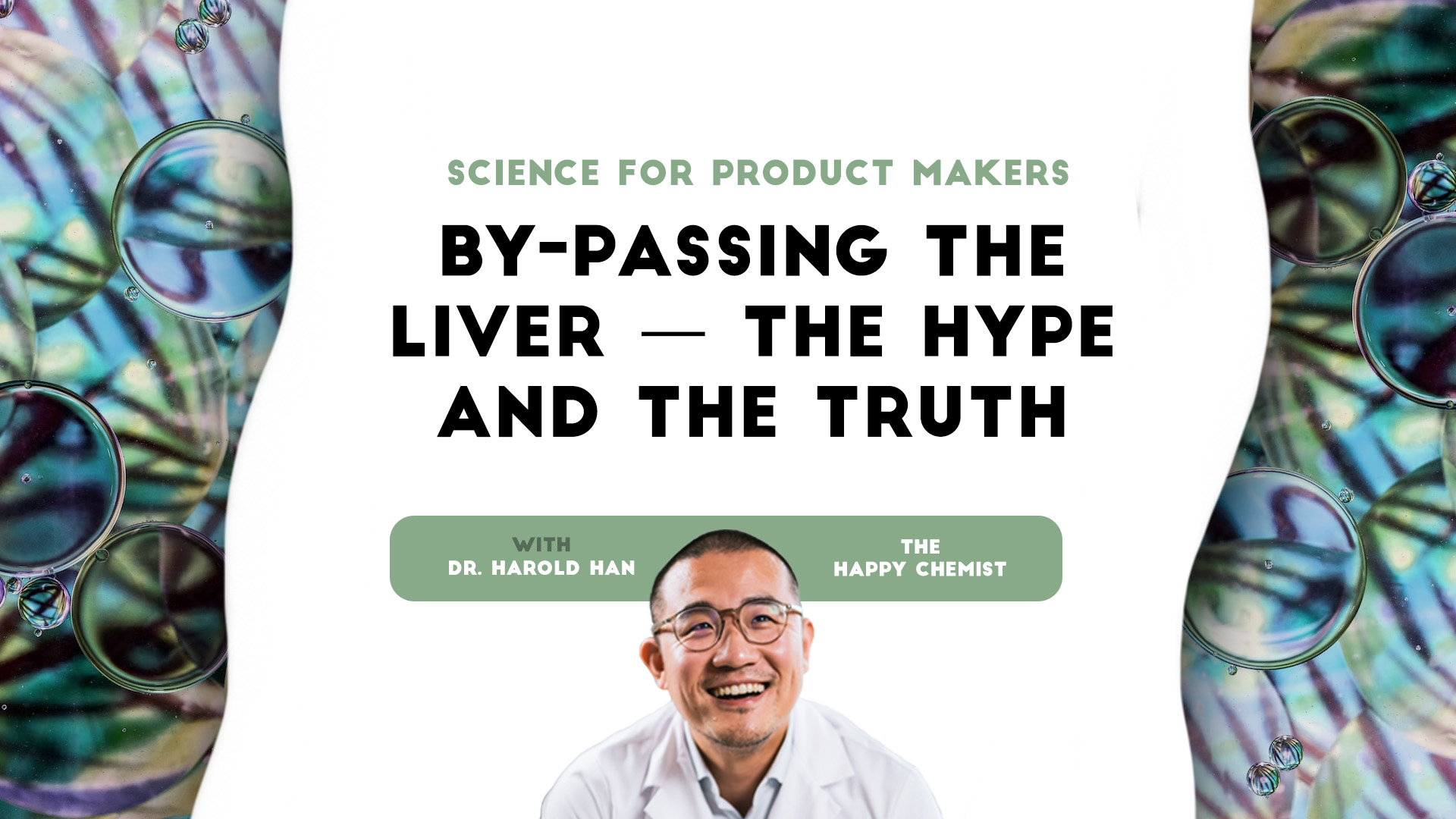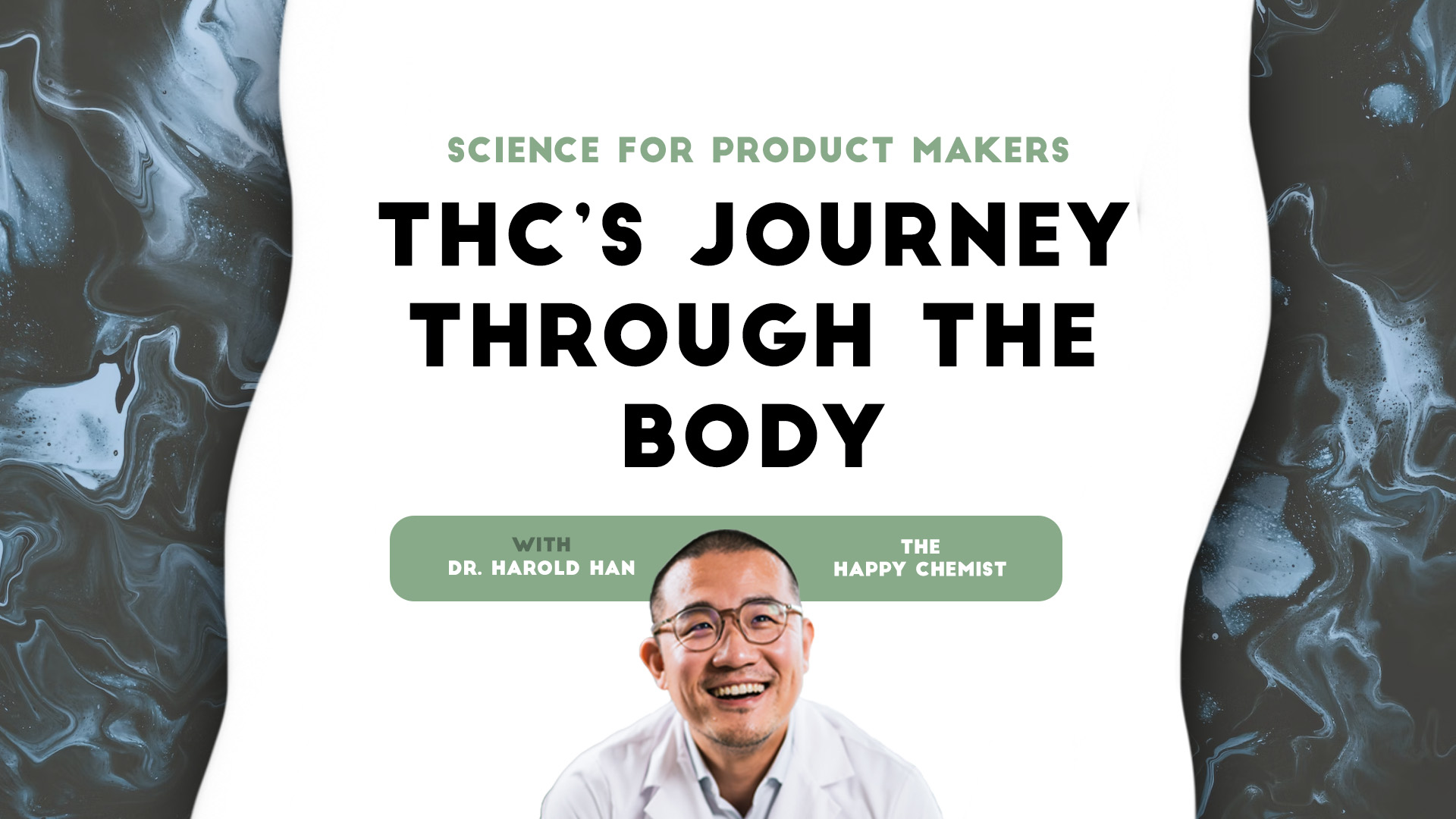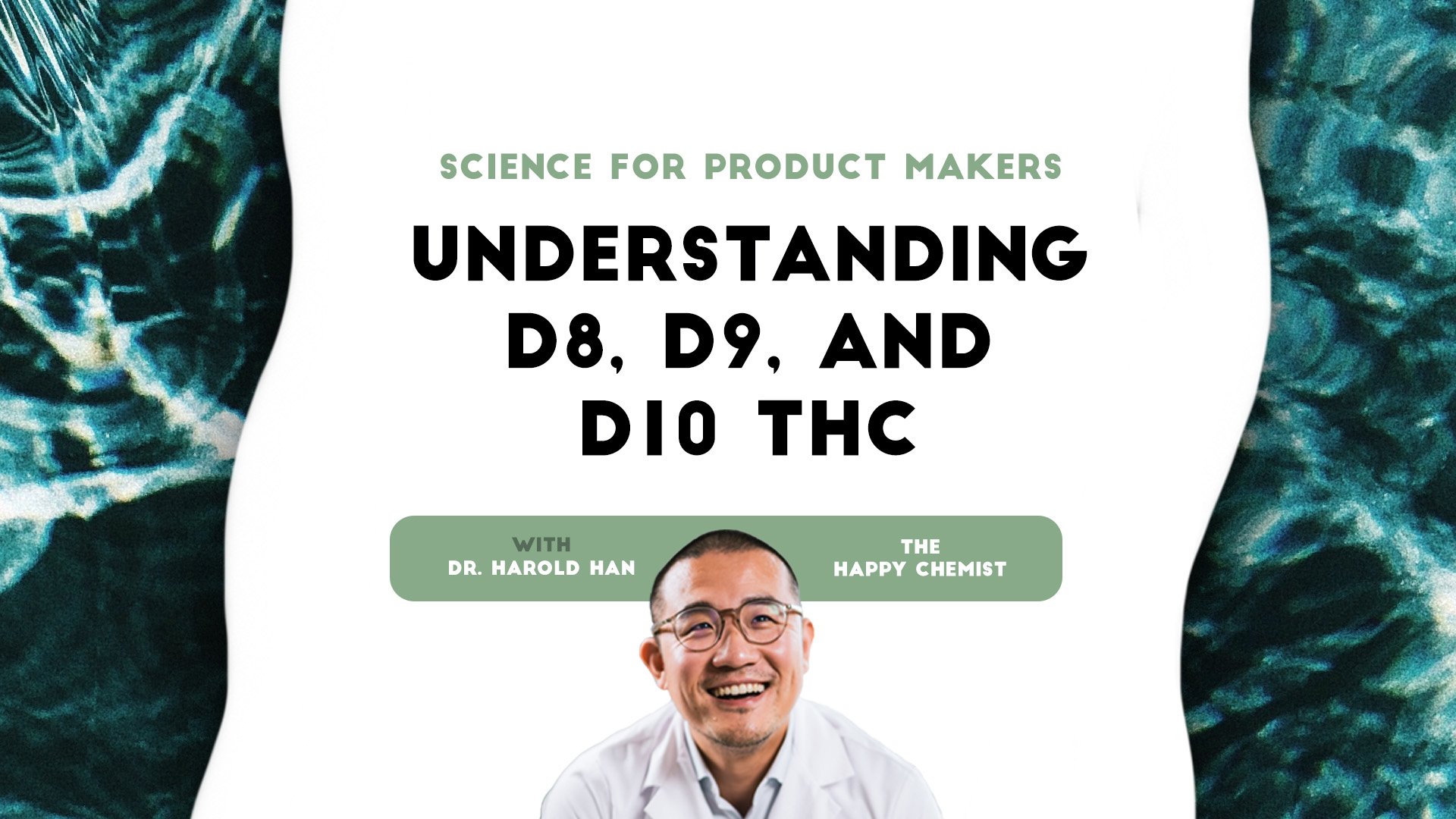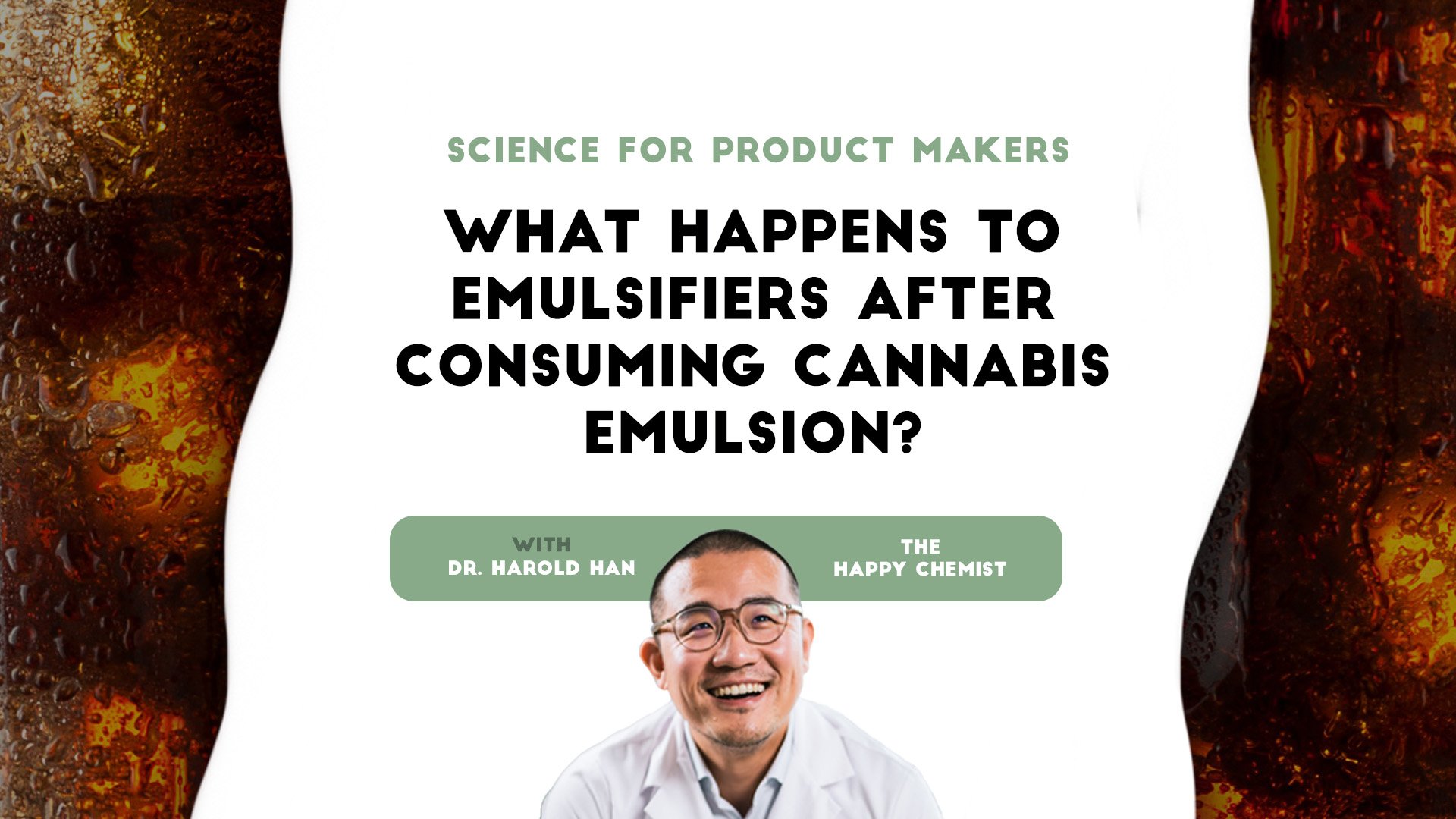Science for product makers: THC’s journey through the body
This post is also published as an article on Harold's LinkedIn profile. You can read and leave comments here.
3 min read
 Dr. Harold Han - "The Happy Chemist"
:
6/28/24 4:53 PM
Dr. Harold Han - "The Happy Chemist"
:
6/28/24 4:53 PM

This post is also published as an article on Harold's LinkedIn profile. You can read and leave comments here.
Our liver is a well-trained bodyguard who constantly cleans and filters out the external substances flowing in our bloodstream, such as alcohol, caffeine and pharmaceuticals. This process, called First-Pass Metabolism, converts all those substances into compounds that eventually can be expelled by urine or feces.
Below: Cannabinoids follow the same path. For example, THC takes the following pathway when metabolized by the liver: is THC > 11-OH-THC > 11-COOH-THC > 11-COOH-THC-glucuronide > excreted (Source)

In the cannabis industry, by-passing the liver has become a popular topic of discussion. From my most recent poll, it seems folks are very curious about this application. In this article, I’d like to share my personal opinion on the truth and hype of each claim from the poll.

Claim 1: By-passing liver increases the active ingredient’s bioavailability
THE TRUTH: THC bioavailability is defined as the total amount of THC flowing in the bloodstream. Liver metabolism converts THC into other metabolites thus reducing the amount of THC in the bloodstream. With everything else being equal, by-passing the liver would offer a higher THC concentration in the blood, thus a higher THC bioavailability.
THE HYPE: Two of the most common delivery methods to by-pass the liver are transdermal and sublingual. Because both methods rely on limited absorption surfaces (skin and mucosal area), the total absorption rate of THC is usually lower. While by-passing the liver helps boost THC bioavailability, the delivery method used to by-pass the liver usually results in a lower THC absorption rate. Thus, the overall THC bioavailability may end up being lower than an edible product.
THE TRUTH: When we take THC orally, the THC molecule transfers from the small intestine through the portal vein into the liver, where First Pass Metabolism happens. When trying to by-pass the liver, a transdermal product delivers the THC molecule through the skin layer, avoiding First Pass Metabolism, which appears to delay the elimination process of THC (see fig. 1).
THE HYPE: But as the drug molecule flows through the blood to reach all the organs, it would inevitably flow back into the liver and continue to get metabolized. As can be seen in the graph below, the starting time of elimination is delayed but once it starts, the slope (elimination rate) should remain the same.

Fig. 1 - Above is an example of PK data showing the concentration of THC in the blood over time.
THE TRUTH: When the liver metabolizes THC into 11-OH-THC, it creates a more intense psychoactive experience (Source). Imagine a carefully crafted edible product containing THC, CBN and myrcene. When entering the liver, they are all metabolized into something else. It is then this cocktail of new metabolites that ends up in the bloodstream instead of the originally intended actives and their concentrations, leading to a less controlled target experience.
THE HYPE: The experience from the metabolites may not be necessarily bad. For example, some people prefer the intense psychoactive experience from edible THC’s metabolite, 11-OH-THC. I would love to see more research studying the psychoactive effect contributed by the metabolites of various kinds of cannabinoids and terpenes.
In my opinion, we should be borrowing successful methods used in the pharmaceutical industry and applying them back to our space to push innovation. While the potential health risks can be low, there is still a dearth of data on this particular subject. Ultimately, we need more products designed to by-pass the liver in order to cautiously assess their safety and efficacy.
You must be wondering now: how do you design a cannabis infused product to by-pass the liver? Don't worry, I'll explain more in my next post.
Dr. Harold Han — the “Happy Chemist” — combines his storied background in emulsion chemistry and science with curiosity and fascination in the rapidly growing cannabis industry. Developing nano and micro emulsions his entire career, Harold holds a Ph.D in Surface Chemistry from NYU and is the inventor of multiple patents in emulsion chemistry.
As the Chief Science Officer at Vertosa, Harold spearheads the company’s development of industry-leading and customized active ingredients for infused product makers, offering pre-suspended aqueous solutions to create incredibly homogenous and stable products while maximizing bioavailability, clarity, and taste.
To learn more about the science of cannabis, check out Harold’s Happy Chemist videos.

This post is also published as an article on Harold's LinkedIn profile. You can read and leave comments here.

This post is also published as an article on Harold's LinkedIn profile. You can read and leave comments here.

This post is also published as an article on Harold's LinkedIn profile. You can read and leave comments here. Have you wondered where the...